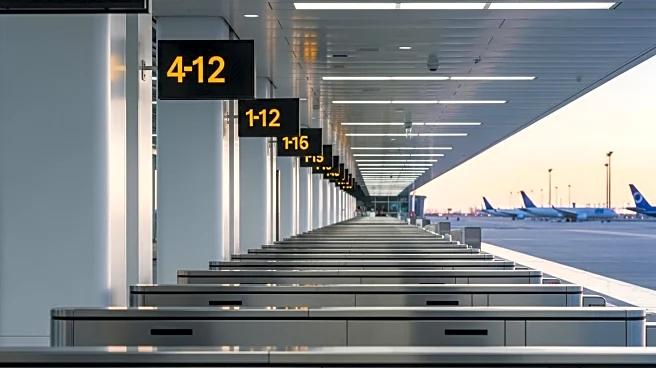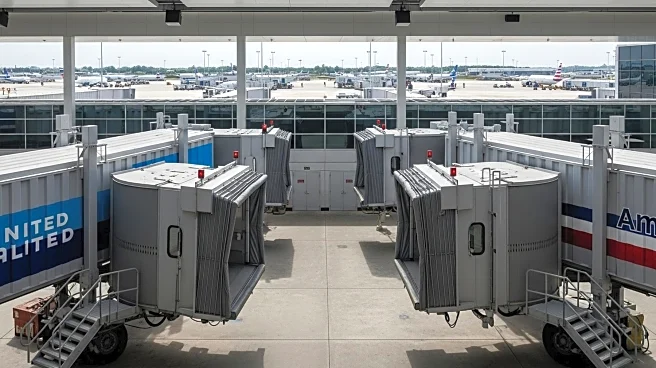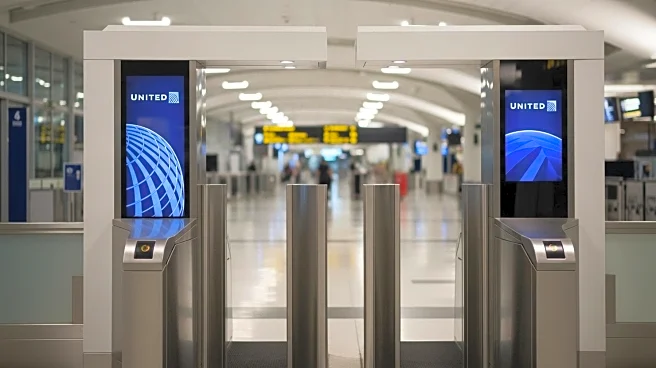What's Happening?
O'Hare International Airport in Chicago is undergoing a significant expansion with the construction of the new Global Terminal, set to replace Terminal 2. The project, valued at $8.2 billion, includes the addition of Concourse D and a smaller satellite terminal, Concourse E, connected by a tunnel. The expansion aims to increase sustainability and passenger comfort, featuring 19 new gates, most of which are flex gates accommodating various aircraft sizes. The construction, which began in August, involves enabling work such as filling in the central basin to make room for the new terminal and expanding the south basin for water flow management.
Why It's Important?
The expansion of O'Hare International Airport is crucial for enhancing its capacity and operational efficiency, addressing the growing demand for air travel. By increasing the number of gates and improving connectivity between terminals, the project aims to alleviate pressure on the existing international Terminal 5. This development is expected to boost Chicago's position as a major global aviation hub, attracting more international flights and passengers. The focus on sustainability reflects broader industry trends towards environmentally friendly infrastructure, potentially setting a precedent for future airport expansions.
What's Next?
As construction progresses, O'Hare officials anticipate minimal disruption to airport operations, with no expected loss of gate usage. The new terminal is scheduled for completion by late 2028, promising enhanced connectivity and flexibility for airlines. The expansion may lead to further legal negotiations over gate space, as seen in recent disputes between United Airlines and American Airlines. Once operational, the Global Terminal will likely attract more international carriers, increasing competition and potentially lowering airfares for travelers.
Beyond the Headlines
The expansion of O'Hare International Airport highlights the ongoing challenges in balancing infrastructure development with environmental sustainability. The project’s emphasis on sustainable practices may influence future airport designs, encouraging the adoption of green technologies. Additionally, the legal battles over gate space underscore the competitive nature of the aviation industry, with airlines vying for strategic positions to maximize their market share. The successful completion of this project could serve as a model for other airports seeking to expand while maintaining operational efficiency.











